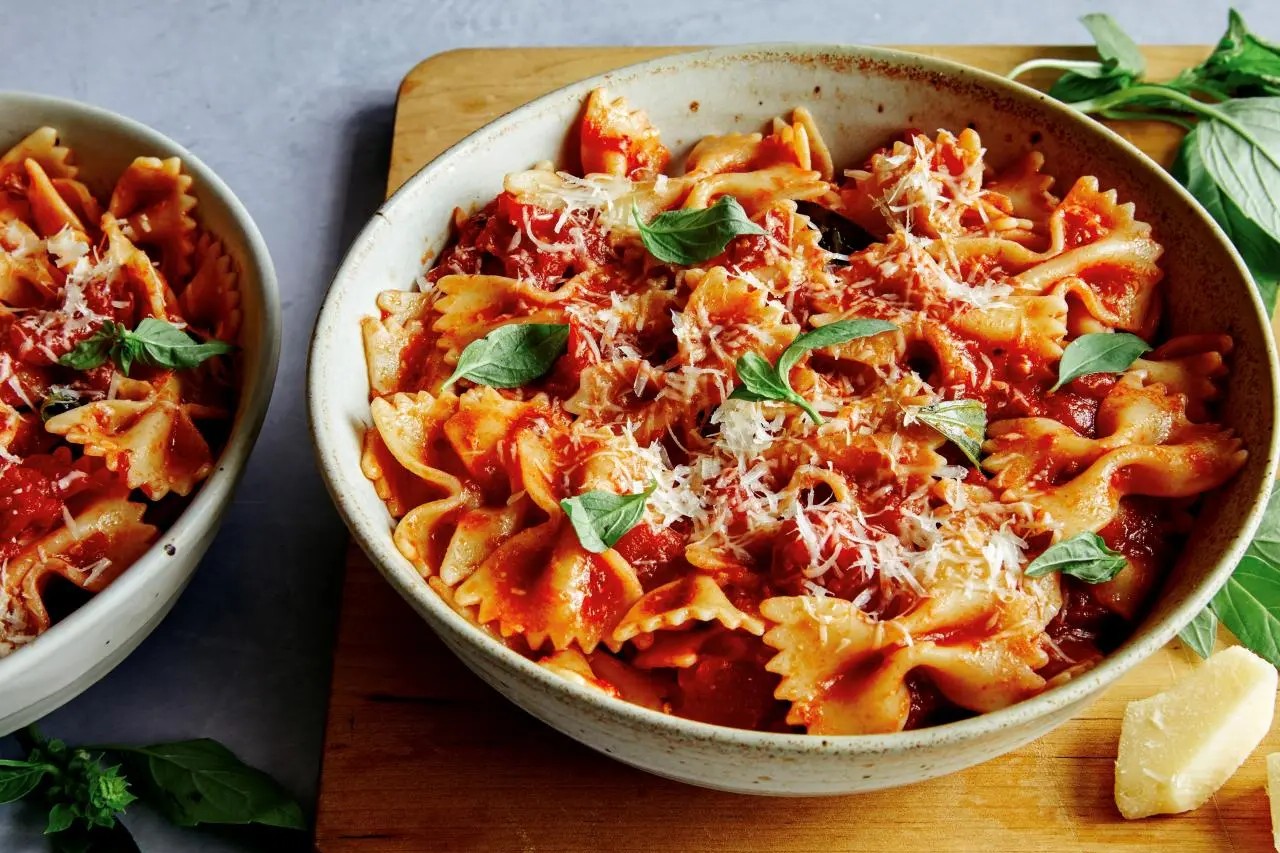
Farfalle, often called "bow-tie pasta," is a favorite in many kitchens. But did you know there's more to this pasta than its unique shape? Farfalle originated in Italy and dates back to the 16th century. Its name means "butterflies" in Italian, reflecting its playful design. This pasta isn't just for looks; its ridges and folds hold sauces perfectly, making every bite flavorful. Farfalle comes in various sizes and colors, often dyed with natural ingredients like spinach or tomatoes. Whether in a creamy Alfredo or a zesty tomato sauce, farfalle adds a touch of fun to any dish. Ready to learn more? Let's dive into 35 fascinating facts about farfalle!
What is Farfalle?
Farfalle, also known as bow-tie pasta, is a popular type of pasta that has been enjoyed for centuries. Its unique shape and versatility make it a favorite in many households and restaurants.
- Farfalle means "butterflies" in Italian, a nod to its distinctive shape.
- Originating from Northern Italy, farfalle has been a staple in Italian cuisine since the 16th century.
- The pasta's shape is created by cutting a rectangular piece of dough and pinching it in the middle.
- Farfalle is often used in both hot and cold dishes, making it incredibly versatile.
- It is traditionally made from durum wheat semolina, which gives it a firm texture.
Farfalle in Different Cuisines
Farfalle isn't just limited to Italian dishes. Its unique shape and texture have made it a popular choice in various cuisines around the world.
- In American cuisine, farfalle is commonly used in pasta salads.
- In France, it's often paired with creamy sauces and seafood.
- In Germany, farfalle is sometimes used in soups and stews.
- In Middle Eastern cuisine, farfalle can be found in dishes that combine pasta with rice and lentils.
- In Asian fusion cuisine, farfalle is sometimes stir-fried with vegetables and soy sauce.
Nutritional Facts About Farfalle
Pasta lovers will be pleased to know that farfalle offers several nutritional benefits. It's not just tasty; it's also good for you in moderation.
- A serving of farfalle (about 2 ounces) contains roughly 200 calories.
- It provides about 7 grams of protein per serving.
- Farfalle is a good source of complex carbohydrates, which provide long-lasting energy.
- It contains essential vitamins and minerals like iron and B vitamins.
- Whole wheat farfalle offers more fiber compared to the regular version.
Cooking Tips for Farfalle
Cooking farfalle to perfection can be a bit tricky due to its unique shape. Here are some tips to help you get it just right.
- Always use a large pot of boiling water to prevent the pasta from sticking together.
- Add a pinch of salt to the boiling water to enhance the pasta's flavor.
- Stir the pasta occasionally to ensure even cooking.
- Cook farfalle for 10-12 minutes for an al dente texture.
- Rinse the pasta with cold water if using it in a cold dish to stop the cooking process.
Fun Facts About Farfalle
Farfalle isn't just delicious; it also has some interesting trivia associated with it. These fun facts will make you appreciate this pasta even more.
- Farfalle is sometimes called "bow-tie pasta" because of its resemblance to a bow tie.
- There are different sizes of farfalle, including mini farfalle, also known as farfalline.
- Farfalle can be colored using natural ingredients like spinach for green or beetroot for red.
- It's one of the few pasta shapes that can hold both thin and thick sauces well.
- Farfalle is often used in festive dishes due to its playful shape.
Farfalle in Popular Culture
Farfalle has even made its way into popular culture, appearing in movies, TV shows, and more.
- In the movie "Cloudy with a Chance of Meatballs," farfalle is one of the many types of food that falls from the sky.
- Farfalle has been featured in several cooking shows, highlighting its versatility.
- Some chefs have created art installations using farfalle due to its unique shape.
- Farfalle is often used in food advertisements because of its visually appealing form.
- It's a popular choice for themed parties, especially those with an Italian or culinary focus.
Farfalle and Sustainability
Sustainability is becoming increasingly important in food production, and farfalle is no exception.
- Many brands now offer organic farfalle made from sustainably sourced ingredients.
- Packaging for farfalle is increasingly being made from recyclable materials.
- Some producers are experimenting with alternative flours, like chickpea or lentil, to make gluten-free farfalle.
- Buying locally produced farfalle can reduce your carbon footprint.
- Farfalle can be made at home, reducing the need for packaging and transportation.
The Final Bite
Farfalle isn't just a pretty pasta; it's a culinary star with a rich history. From its unique shape resembling butterflies or bow ties to its versatility in dishes, farfalle has earned a special place in kitchens worldwide. Whether you're whipping up a hearty pasta salad, a creamy Alfredo, or a simple tomato sauce, this pasta fits the bill.
Remember, farfalle's distinct texture holds sauces well, making each bite flavorful. It's also a fun way to introduce kids to different pasta shapes, sparking their interest in food. So next time you're at the grocery store, grab a box of farfalle. Experiment with new recipes, or stick to your favorites. Either way, you'll be enjoying a piece of culinary art that's been loved for centuries. Happy cooking!
Was this page helpful?
Our commitment to delivering trustworthy and engaging content is at the heart of what we do. Each fact on our site is contributed by real users like you, bringing a wealth of diverse insights and information. To ensure the highest standards of accuracy and reliability, our dedicated editors meticulously review each submission. This process guarantees that the facts we share are not only fascinating but also credible. Trust in our commitment to quality and authenticity as you explore and learn with us.
